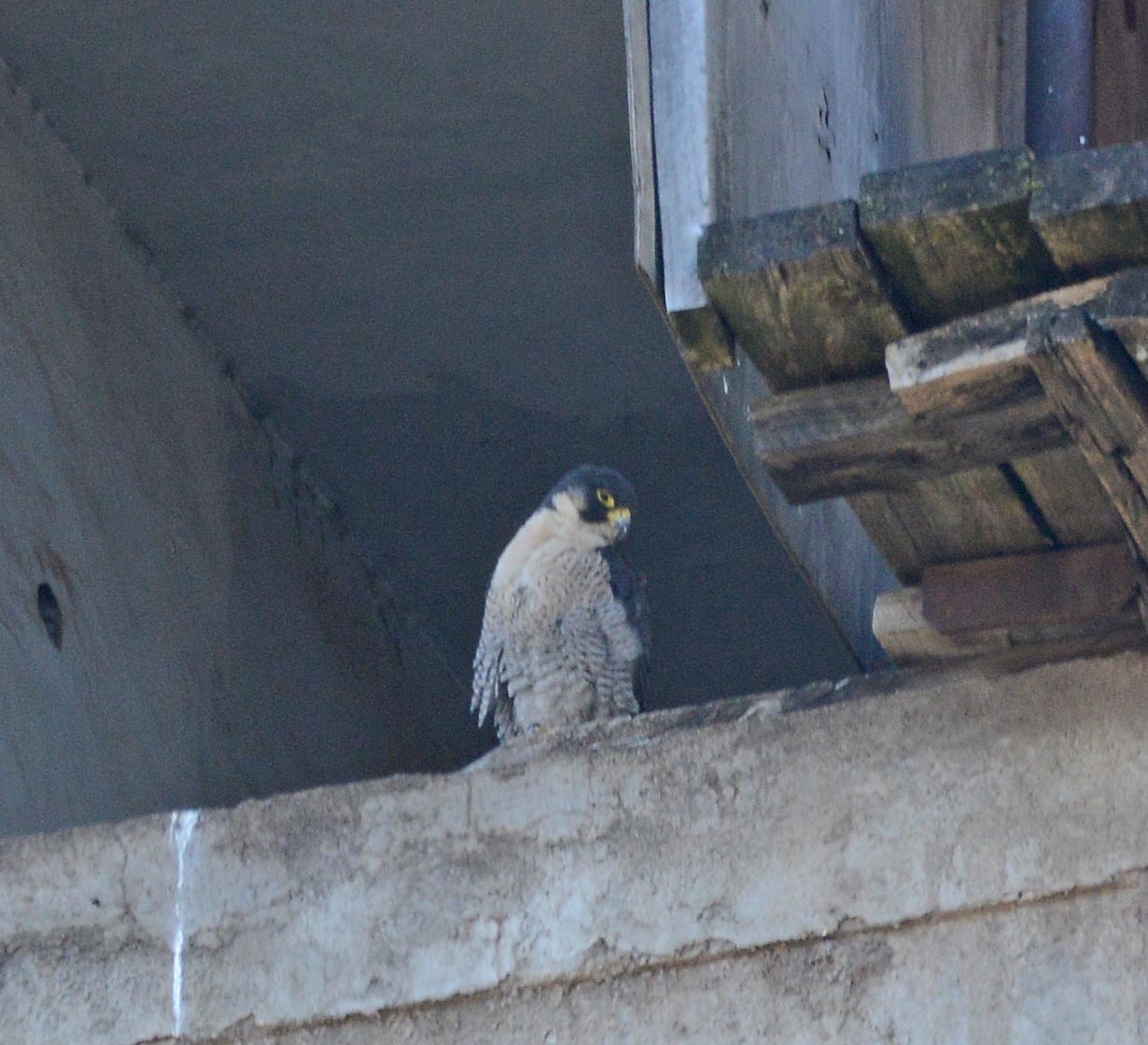For some years we have been occasionally seeing Peregrine Falcons around a landmark building smack in the heart of the city, once even a pair noisily displaying. Now falcons tend the be the quiet type, except around the nest during the breeding season but, in spite of staring up to neck injury levels, we couldn’t locate it. A few days ago, around breakfast time, a peregrine falcon was seen disappearing into a neighbouring abandoned building and, scanning that façade, a white poo mark could be seen way up indicating that a bird might be ejecting there regularly. So it was just a question of time (and luck) until the critter was settling down and preening itself on that floor. Quite sure the young are just behind the wall.
City Peregrines are nothing new, especially in Europe where the tourist and lonely old ladies fed pigeons offer abundant and comparatively stupid food. One would think rubbish eating city pigeons would not be very healthy but in fact, city Peregrines are doing much better than their remote rural cousins.
The story goes like this. When DDT use went ubiquitous in the 1950s Peregrine populations (as well as other top-of-the-food-chain raptors) collapsed as their eggshells thinned and the eggs broke because of DDT accumulation. Then, when environmental agencies still has some clout, DDT was banned and Peregrines started to make a come-back… in the cities but strangely the eggs in the remote and pristine looking tundra in Scandinavia did not. Now these rural dwellers specialise on Greenshanks and other waders who spend their winters in Africa where our Nigerian brothers have been continuing to produce DDT and similar persistent organo-chlorides and selling it throughout the continent. Our rice-producing neighbour in Mauritania was very proud when he purchased a 200 litre drum of the stuff of which he would scoop a bucket and chuck it into the pump when irrigating his fields. “Great stuff” he said “it even kills the birds”.
Is somebody checking what it does to our raptor populations? And does it teach us something on the clout, capacity and dedication of our environmental agencies?
